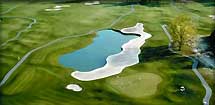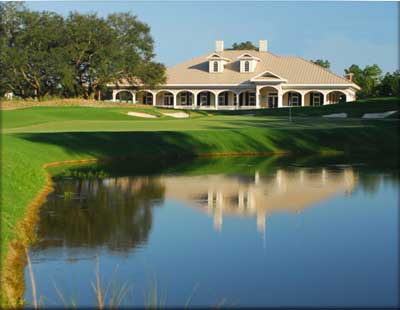|
|
Introducing the best new golf course to open in the Myrtle Beach area in a long, long time: The Founders Club at Pawleys Island. This course offers stunning visuals that only the Pawleys Island area can provide.
The Beach is abuzz about the addition of the new Founders Club at Pawleys Island, created by Thomas Walker, former lead designer for Gary Player Design. Walker engineered the estimated $7 million redesign of the former Sea Gull Golf Club into a magnificent new Lowcountry layout with 18 masterfully designed holes that are visually stunning, giving the illusion that it is harder than it really plays. Walker's team took advantage of the natural gold-and-orange sands to serve as transition areas, and moved over 250,000 cubic yards of dirt - a good amount being on the flatter front side to make it resemble the more rolling back nine. The fairways are Emerald Bermuda grass and the greens are 419 Bermuda. Founders Club is a sensational addition to the Waccamaw Trail collection of courses, and one that deserves a special place on your golf vacation itinerary.
The Verdict: Eighteen uniquely designed holes give golfers an experience they are sure to remember. Conclude your day with a drink and something to eat in the Lowcountry-style clubhouse overlooking the 18th green. The Founders Club at Pawleys Island is certain to be a "must play" when visiting the Grand Strand.
The Founders Club anchors the South Strand as the southernmost course on Pawleys Island, just down Highway 17 from Pawleys Plantation, Caledonia and True Blue. It is the highest-end course in the Classic Golf Group and also a member of the Waccamaw Golf Trail.

Package Notes:
Prices are per golfer based on 4 persons sharing a 2 bedroom condo - includes all taxes. Prices are subject to change without notice. Accommodations and golf are subject to availability.
| Package Rates 2011: | |
| Jan 20 – Feb 16 | $350 |
| Feb 17 26 – Mar 2 | $430 |
| Mar 3 – 16 | $475 |
| Mar 17 – Apr 24 | $520 |
| Apr 25 – May 8 | $490 |
| May 9 – May 22 | $470 |
| May 23 – Sep 7 | $420 |
Originaly Opened:
1965
Re-Opened:
February 2008
Course Type/Style:
Semi-Private/Parkland
Number of Tee Boxes:
5 sets
Total Number of Sand Bunkers:
100 +
Number of Water Hazards:
10 of 18 holes
Most Challenging Hole:
No. 10
Most Memorable Hole:
No. 18
Sinature Hole:
No. 9
Acreage of Course:
! acres
Average Size of Greens:
6,400 sq. ft.
Primary Grasses
Fairways:
Emerald Bermuda grass
Rough:
Emerald Bermuda grass
Greens:
419 Bermuda grass
Months Open:
January – December
High Season:
March – May
October – November
Aerification:
Overseeding:
Rounds per year:
Green Fees:
Low: $70 High: $126
Walking Options:
Mandatory Cart
Director of Golf:
Richard O. Taylor II, PGA
Superintendent:
, GCSAA
Golf Digest ![]() rating
rating

By Chris King on May 4, 2010
The TPC-Myrtle Beach is one of the Grand Strand's bluebloods.
It enjoys the benefit of a premium brand, superior design (the team of Lanny Wadkins and Tom Fazio is tough to beat), and it's the home course of Dustin Johnson, a three-time winner on the PGA Tour. Throw in a bevy of national honors, and it's not hard to see why the facility is so highly regarded.
Identifying the three best holes on a course that has hosted what was then the Senior PGA Tour Championship and gets a regular workout from Johnson is a challenging task, because the candidates are plentiful. We asked course owner Chip Smith to identify the best of the best at TPC-Myrtle Beach and he complied, with an assist from Johnson.
The three best holes at TPC are:
No. 5, 158-yard, Par 3: Despite being TPC's shortest hole, the fifth is one of its most challenging, particularly from the tips where the tee shot requires a long forced carry over water. The green is wider than it is deep, so your margin for error is limited. A bunker in the right front looms for players not playing from the tips, as does a bunker in back of the green.
"There is almost a false front on the front of the green," Smith said. "It's a tough little shot because the green is narrow. The right side of the green is always better than short because of the lake."
No. 17, 193-yard, par 3: The words island green and TPC have almost become synonymous because of the famed 17th at Sawgrass, and No. 17 at TPC-Myrtle Beach is a reasonable approximation. The primary differences? The 17th in Myrtle Beach is a peninsula green surrounded by water on "only" three sides and it's approximately 50 yards longer. The 17th is TPC-Myrtle Beach's signature hole and with an almost constant wind, it represents a significant challenge. "Because of the distance, I think it's a little tougher than 17 at Sawgrass," Smith says. "Now I've never stood on 17 at Sawgrass on Sunday with $1.4 million on the line either (laugh)."
No. 18, 538-yard, par 5: The 18th, with a creek running along the right side of the fairway and a large lake on the left, is Johnson's choice as the course's best. It's a classic risk-reward hole. Players that can snuggle up to the creek before it runs out to the lake can get home in two, but there is considerable risk. Half of the green is exposed to water and with the rough surrounding it shaved, it's not an easy green to hold. One person who doesn't have to worry about length is Johnson. What does one of the PGA Tour's longest hitters use to reach the green on his second shot? "Depending on which way the wind is blowing, anywhere from a 5 or 6 iron to a 3-wood," he said. For the mere mortals among us, an iron on the second shot when attempting to reach the 18th green is out of the question!